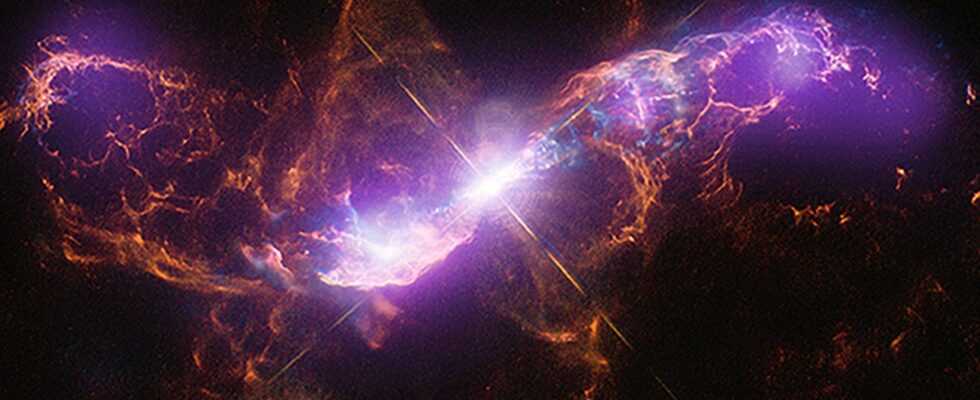The Chandra Observatory has released a series of composite images, which combine different types of lights. Among these images, we find galaxies, stars, supernovae. And it’s absolutely beautiful.
The Universe is sublime to look at, but part of its beauty is inaccessible to us with a simple look. This is where telescopes come in, to show us the cosmos in all its richness. By moving on the electromagnetic spectrum, one can look at all the variety of the emitted lights. At each type of light looked at its relevant scientific information.
But what happens when you overlap multiple lights — that is, multiple shots from a different part of the spectrum? It is then a “composite image”, a fairly common technique in astronomy for combining several different shots, and this often gives breathtaking celestial images.
The Chandra Observatory gives us new and superb examples of this in a new post, published on February 2, 2022. If Chandra is specialized in the detection of X-rays (practical for detecting distant or small very energetic objects), these images published by the observatory combine this “layer” with images resulting in particular from optics or radio waves. ” This gallery shows examples of combinations of different types of light from ground-based and space-based telescopes », introduces the observatory.
Galaxies, supernovas…
The picture below shows Cassiopeia A, a supernova remnant. X-rays observed by Chandra show silicon (in red), sulfur (in yellow), calcium (in green) and iron (in light purple). Two layers are added: one from radio wave data captured by the Karl Jansky Very Large Array (dark purple, blue and white); the other is an optical capture from Hubble (orange).
” Like X-rays, radio waves can penetrate the thick clouds of gas and dust that lie between Earth and Cassiopeia A, providing additional information about this famous stellar explosion. », Details the observatory.
This is a composite image. If we observe the same celestial object under each of the lights mentioned, this gives the three images below (from left to right: X-rays, radio, optics).
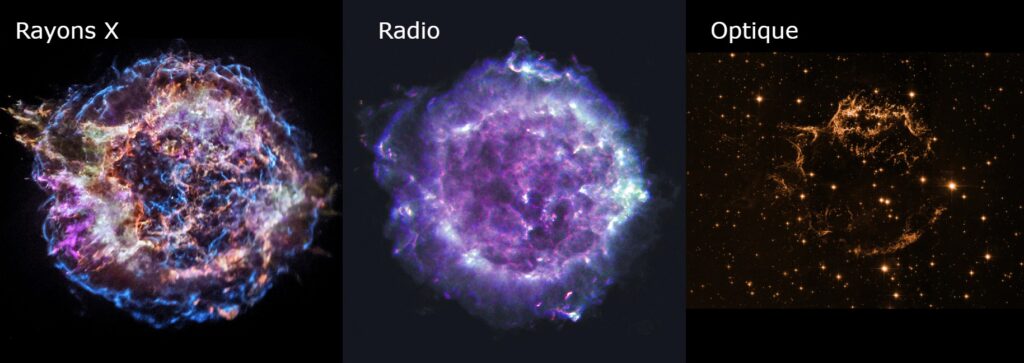
Now here is the galaxy NGC 4490, which collides with another, smaller galaxy, not present in the image. The composite image combines X-rays and an optical image. In violet, these are the X-rays, and in red, green and blue, the optical spectrum. ” Some of the X-ray point sources represent stellar-mass black holes and neutron stars within the galaxy », Explains the observatory.
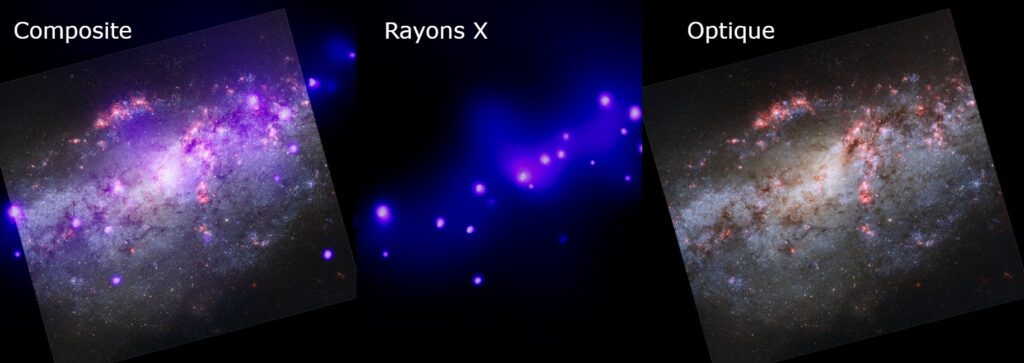
Same combination for R Aquarii, below. This object is a pair of two objects: a white dwarf star, at a (relatively) cold temperature, and a red giant (very hot but whose energy varies). ” Orbiting each other, the white dwarf attracts matter from the red giant to its surface. Over time, enough of this material builds up and triggers an explosion. The composite image combines X-rays with optics.
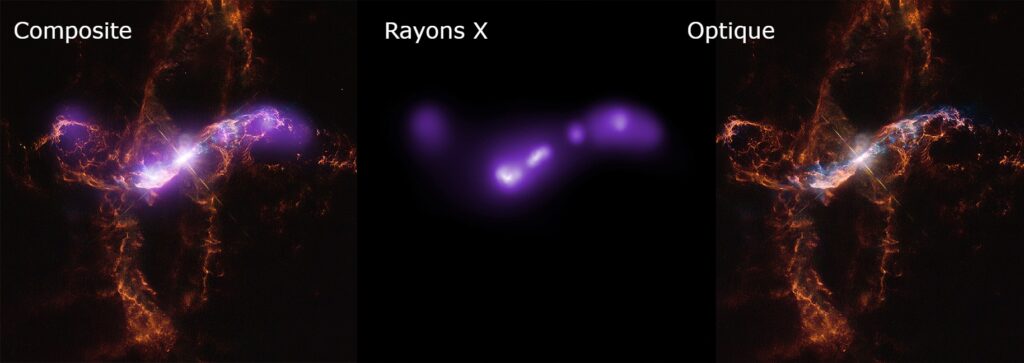
Abell 2597, on the images below, is a cluster of galaxies: this type of cluster represents the largest known “structure” of the Universe, since it brings together several galaxies, held together by gravity. There are individual galaxies, large amounts of hot gas, most likely dark matter… and a black hole in the center may influence the behavior of the cluster. ” In galaxy cluster Abell 2597, a giant central supermassive black hole pushes gas out and creates bubbles, or voids, inside. »
The composite image at the top left combines X-rays from the Chandra observatory (in blue), optical captures from the Digitized Sky Survey (in orange), as well as a more specific light called H-Alpha (Hα): l emission of hydrogen atoms in optical light, captured by the Las Campanas observatory in Chile (red).
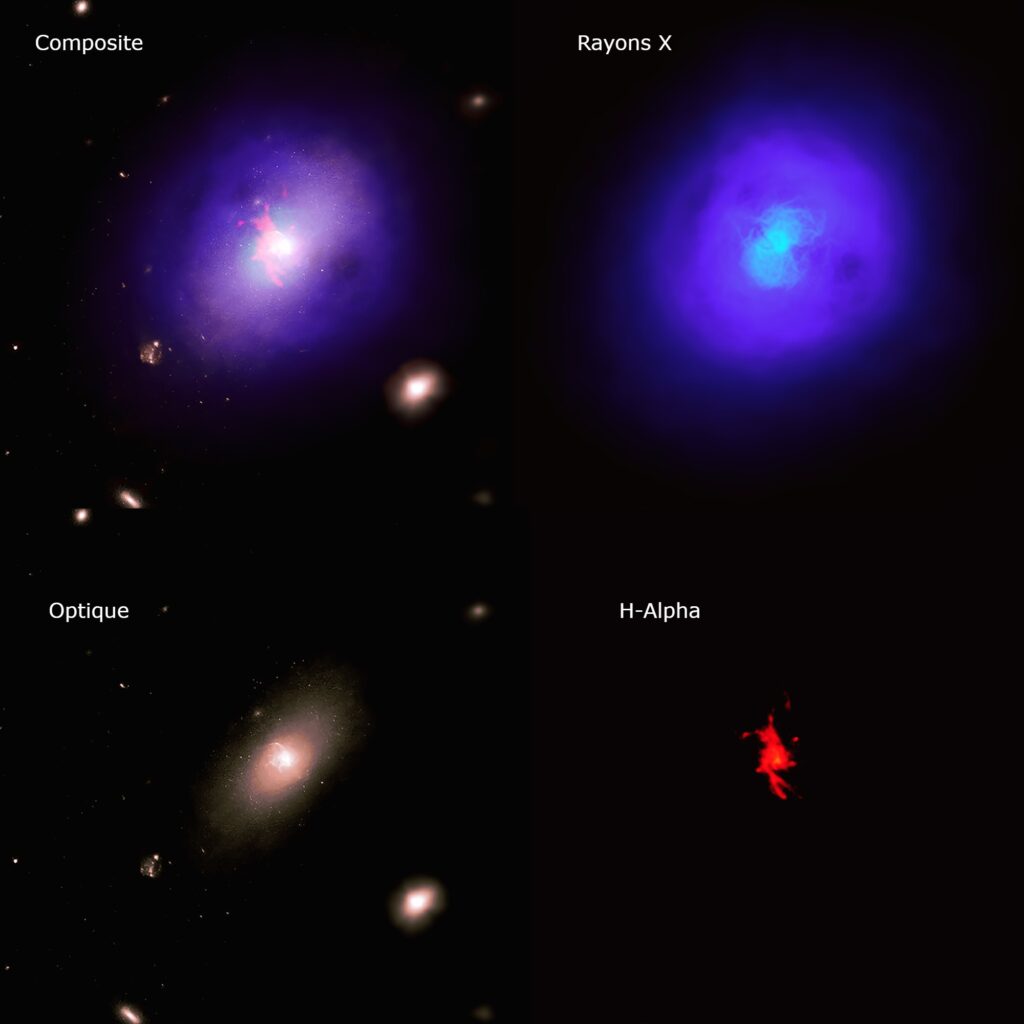
It also helps to understand what a telescope like the James Webb can be used for. The latter will not result in images that will seem visually revolutionary to you, but they will be infinitely valuable. They will bring their own information on the Universe, also coming to be combined with other shots.
